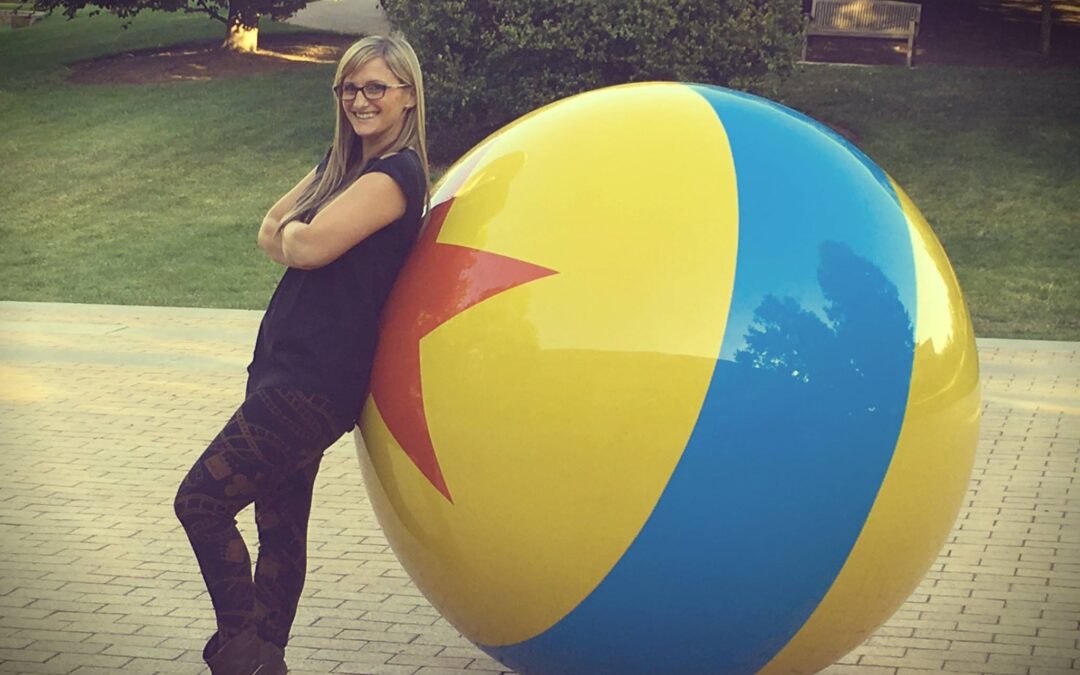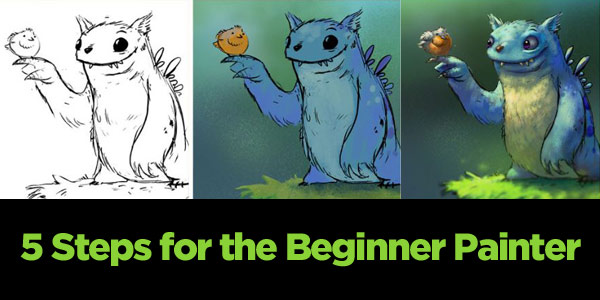
A common misconception is that to become a successful artist, one must already possess artistic skills. I believe that this couldn’t be further from the truth. If you have the drive, dedication, and passion to become a painter, it’s something you can achieve.
A common misconception is that to become a successful artist, one must already possess artistic skills. I believe that this couldn’t be further from the truth.
For the longest time I thought that to be an artist you had to be born with artistic skills or talents. That you needed to have, at least at some level, an innate ability to create art. That wasn’t me and it kept me from pursuing that dream for a long time. I came to realize that I could achieve anything I really focused on, so I made the switch and began working toward artistic goals that I originally thought would never be within my reach.
That’s an idea I always want to impress upon individuals considering or just getting started in the arts. If you are serious about developing those skills and are willing to put in the work, you can make it happen.
To help you get started, I came up with a few first steps that I think are worthwhile for the beginning artist:
1. Learn the Fundamentals
A critical first step is to develop your artistic foundations. Don’t skip the basics! It’s really important to build a solid foundation and understanding of the core principles of painting. This covers a wide gamut of skills you can develop, but by putting in the time to develop these skills, you’ll be able to go much further.
Start with simple value studies and learn to show form, or create interesting compositions. You can have fun with these exercises as well so that they aren’t so dry or boring. For example I really enjoy drawing and painting monsters/creatures. So when doing a simple primitive study, why not add a bit of character to it?
Some of the initial skills to focus on are:
Value: The relative brightness or darkness. I recommend using a black and white 10 step value scale for your studies (value 1 = black, value 10 = white). This simplifies the value range to help you see and understand the comparative value relationships.
Composition: The drawing (sketch), arrangement and distribution of shapes on the picture plane, and focus (where you want the viewer to look). Learning how to compose your image to create visual interest and a clear focus.
Form: Creating the illusion of volumetric 3D forms in your paintings. An object will typically have a highlight, lightside, mid-tone transitions, core shadow, shadow side, and cast shadow. Using these together will help to create the feeling of dimensionality to your paintings.
Perspective: An important principle of drawing, but also heavily used in paintings. Study one-point and two-point perspective. Learn to see the planes of an object and how it turns in space. This information will help your paintings to feel grounded, and will help you plot out the lighting within your scenes.
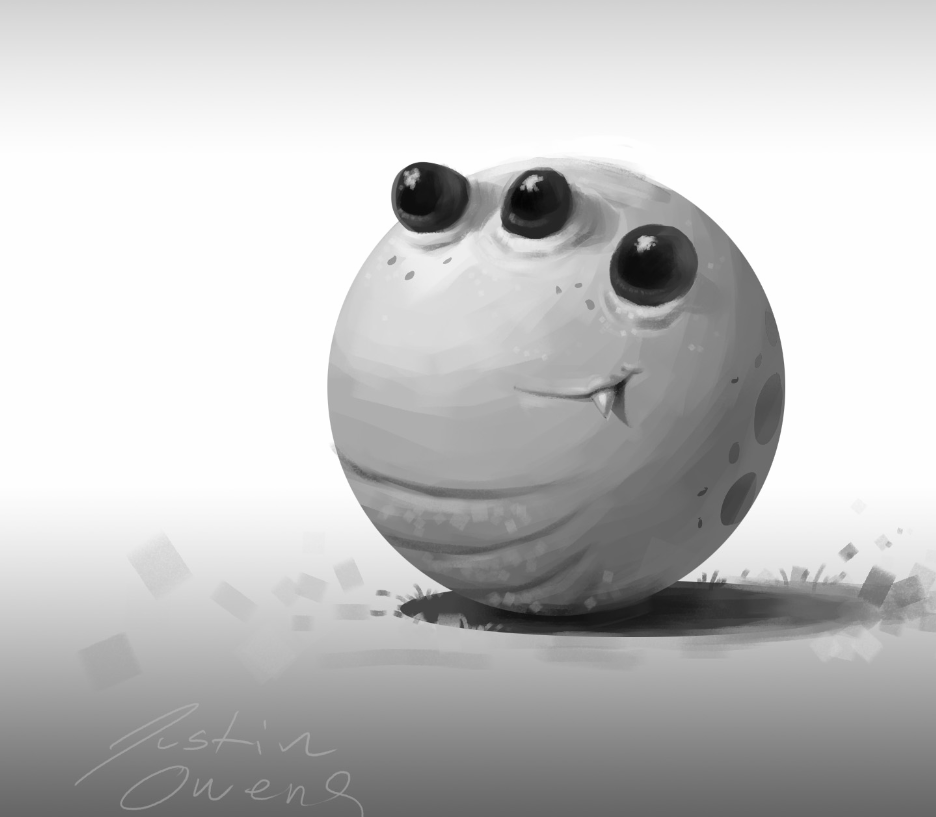
Simple value study done for my students in class. Added a bit of character to it to make the exercise more fun.
2. Get in the Right Mindset and Stay Positive
Easier said than done, but I always recommend that you try and keep a positive mindset when developing any artistic skill.
When studying any artistic medium it’s good to have the right mindset. It’s so easy to just get down on yourself if a painting doesn’t meet your expectations. Just realize that it’s a journey and that growth will happen if you keep practicing.
It’s so easy to just get down on yourself if a painting doesn’t meet your expectations. Just realize that it’s a journey and that growth will happen if you keep practicing.
Think of each painting or drawing as a chance to try something new and to grow. If it doesn’t turn out well, that’s cool! Move on to the next piece and try again. Through regular practice and development, you’ll build the skills needed to execute your ideas and reach your artistic goals.
3. Create Studies and Master Copies
Valuable for any artist and so key for new painters, is the power of doing studies and master copies.
Studies can be from photo reference, live observation, or by copying other artists’ work (master copies). When doing a study, be less concerned with the final artistic vision (end product) and instead try and focus on practicing a specific skill or principle.
In this instance I define a study as using reference (photographic or observed from life) to create a painting, with a focus on capturing elements observed. The elements observed could include the composition, subject matter, lighting, color harmonies, etc. I also like to emphasize that the purpose of a study is not to try and copy the reference exactly. Instead, use the reference as a guide and starting point.
Pro Tip: Want to improve a specific skill? Study it! Spend at least 15 minutes per day for a month on one skill.
Want to improve a specific skill? Study it! Spend at least 15 minutes per day for a month on one skill (such as composition) and you’ll see a marked improvement. Studies are a great way to let go of any expectations you may have placed on your art, and instead just focus on the joy of learning.
A note on master copies. Learning from other artists holds a lot of value. They’ve already spent the time doing so much problem solving and you can benefit from studying that. If you ever post/share online a master copy that you’ve done, make sure to credit the original artist. Learning from other artists is great, acknowledging that learning and sharing your journey with others is cool, but you don’t want to ever appear to be passing their work off as your own. That’ll earn you a bad reputation fast.
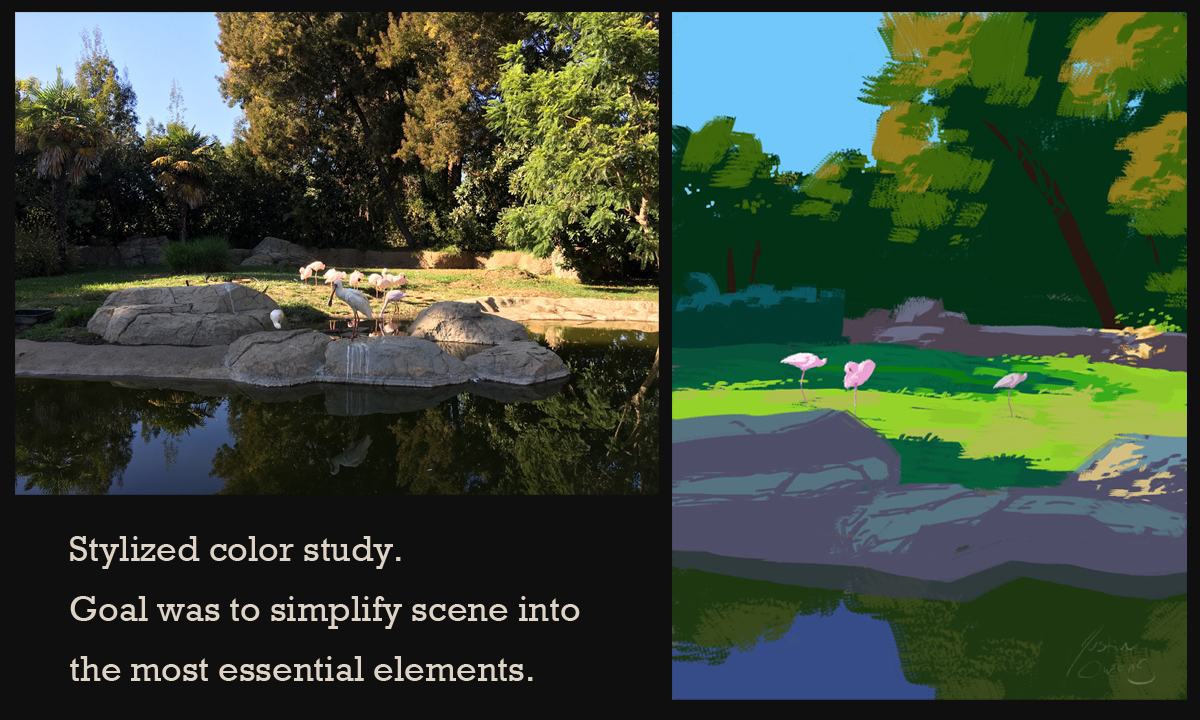
Example of a study from photo reference. My focus was to simplify the composition and value structure, while pushing the color palette into a more stylized realm.
4. Simplify
An important part of the painting process is learning how to simplify.
An important skill to develop and be mindful of is that of simplification. It’s the process of distilling complex information down into the most essential elements.
Beginning artists will frequently spend too much time on details when they should still be focusing on the big picture and broad strokes. Squint your eyes down when studying a subject, and note the broad values, main color relationships, and overall shapes you see. Instead of painting every tree and leaf in a forest, can you suggest that detail with a few simple strokes? Learning how to make those decisions will help with your painting efficiency and allow you to better focus the viewer’s eye.
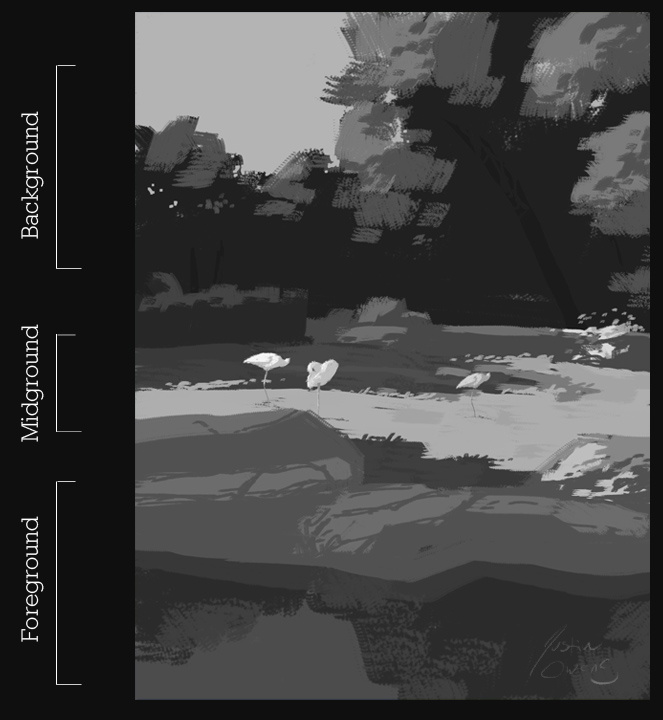
Notice how I grouped the values to create the greatest contrast in the midground. That’s my focal point for this piece.
5. Always Self-Critique
Learn how to give yourself effective feedback to improve your own work.
An important step when you finish a piece is to analyze what went well and where you could make improvements. As you do this more and more, you’ll develop your critical eye and be able to catch potential problems earlier, or at least give yourself something to work on next time around.
Getting critical objective feedback from outside sources is incredibly valuable, but that’s not always available. Having that self-critique tool on hand will allow you to push yourself in positive ways.
When critiquing your work, analyze the following aspects individually: values, colors, edges, composition, etc. If an aspect stands out, ask yourself what could you do to improve upon it? Or if you don’t know how to fix it in your current painting, make note to pay attention to that particular aspect in your next painting and try and approach it differently. Having a fresh perspective or awareness when working on your next piece can help you identify more efficient ways to deal with the problem.
The purpose of the self-critique is not to beat yourself up. Go back to Step 2 and remind yourself that your goal is to help yourself improve. Objective feedback from yourself or others is an important part of the process.
The purpose of the self-critique is not to beat yourself up. Go back to Step 2 and remind yourself that your goal is to help yourself improve. Objective feedback from yourself or others is an important part of the process.
These steps just scratch the surface and are by no means a mandatory path when it comes to exploring the art of painting. Painting is a very fun and creative process where you can get into the fun of storytelling through expressive imagery. Remember that it’s within your grasp to develop these skills and don’t let anyone (including yourself) put out that spark.
A Final Note on Tools
The steps and principles I mentioned above apply to any painting medium. It doesn’t matter if you are painting digitally, or with a traditional medium (acrylics, oils, watercolors, or gouache). The basic principles of painting apply to all of these approaches.
If painting digitally, make sure you get a tablet that includes pressure sensitivity. The industry standard is a Wacom device, either an intuos tablet or cintiq display. There are other more affordable models starting to hit the scene, so explore your options. Recently the iPad Pro, Apple Pencil and Procreate combo have been gaining momentum in the artist community.
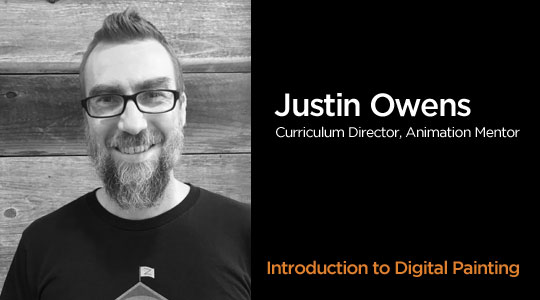
Learn to capture the world around you!
The character, creature, environment, prop, and background designs that determine the look and feel of your favorite movies, TV shows, and games all probably started with a painting.
In Introduction to Digital Painting, you’ll learn to understand the basics of what makes a successful painting, to choose the right tools, and to apply these skills to your own interests and career path!


